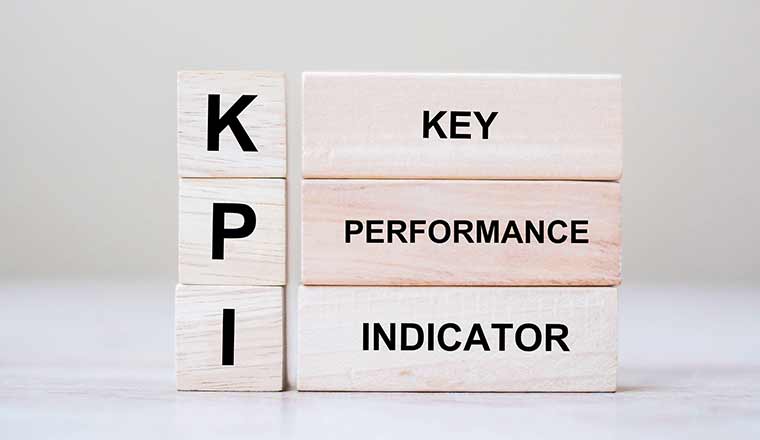 |
| Key Performance Indicators (KPIs) in Content Marketing |
In our previous article, ' Why Your Content Marketing Fails ', we said that not measuring performance can lead to content marketing failure. In this article, we will talk about the key performance indicators (KPIs) to measure in content marketing.
The three common goals of content marketing are 'build brand awareness, 'generate leads' and 'increase conversion rates. Measuring key performance indicators (KPIs) can help you see what's helping you achieve each goal and what's not, and identify areas for improvement. Let's look at the indicators to achieve each goal.
KPIs for building brand awareness
1. Website Traffic
By measuring the number of page views or website visitors as your website traffic, you can find out where your potential customers are coming from. You can also see which channels are driving awareness for each source. In the 'Acquisition' tab of Google Analytics, you can see traffic broken down by source channels such as Google/organic, email/Mailchimp, and CPC/Google. Website traffic metrics can help you decide which channels to focus more on your content.
2. SERP exposure rate
If you create high-quality content that faithfully answers the questions of searchers, and optimizes your search engine, you are more likely to appear on the search results page. This can increase KPI website traffic and have a positive impact on building brand awareness. Also, by understanding your SERP exposure rate, you can determine what content needs to be supplemented and what types of content are performing well on search results pages.
3. Number of social media shares
Social media plays an important role in viral content. And viral content increases conversion rates. By measuring how well your content is shared on social media and how people are engaging in comments, you can determine whether your content is successful, and the shared content can increase your brand awareness online and drive more sales.
4. Backlink
 |
| Key Performance Indicators (KPIs) in Content Marketing |
The more content and brand names cited and backlinked from other websites, the more the industry considers those brands to be trusted and authoritative sources. As brand awareness builds, Google also considers it a trusted site and can help boost SERP rankings. By reaching more people and acquiring organic traffic through your backlinks, you can help build brand awareness as well as help generate leads.
KPIs for Lead Generation
1. Average time spent on page
Pageviews are simply an indicator that people are overly interested in the topic your content covers. However, time spent on a page is a realistic metric for how attractive your published content is to potential customers. If your audience spends too little time on long content, you might consider making the content type shorter.
2. Click-through Rate (CTR)
Measuring the click-through rate of your website content can help you understand how effective your content is at generating leads. To get customers to click on your content, you should include a clear call to action (CTA) at the end of every post. Whether it's visiting a specific page, downloading a resource, or leaving a contact message, a persuasive CTA that allows readers to take the next action can help attract potential customers.
3. Cost Per Lead (CPL)
You can calculate your cost per lead by dividing your campaign cost by the total number of leads generated. Measuring cost per lead by content type and by publishing channel can help you identify which channels and content types are performing better. This allows you to focus more on successful content and gain an edge in your channel.
KPIs to increase conversion rates
1. Conversion Rate
 |
| Key Performance Indicators (KPIs) in Content Marketing |
Tracking and monitoring how many leads convert to paying customers can give you a clear picture of which content has the highest conversion rates and drives sales. By using custom UTM links for each piece of content you publish, you can track customer conversions and refine your target channel strategy to increase conversion rates.
For Amazon, we use personalized content throughout the buyer's journey to increase conversion rates. We recommend products based on customer interests and past purchasing behavior and provide optimized website content and email content.
2. Sales lead time
To achieve your goal of increasing conversion rates, you need to measure how long it takes for potential customers to consume your content and convert it into actual sales. This can help you understand which channels that helped generate leads are generating sales the fastest.
Conclusion
Measuring key performance indicators in content marketing is important to determine whether the content you are publishing is delivering the desired results. This is because we need to know whether the customers who enter our brand are satisfied with and empathize with our content so that we do not lose the overall direction of content marketing.
Also, by measuring performance metrics, the more you revise and improve your strategy to deliver high-quality content, the more your brand is recognized and the more leads you generate. We believe this can lead to the healthy and sustainable growth of the brand.


Comments
Post a Comment